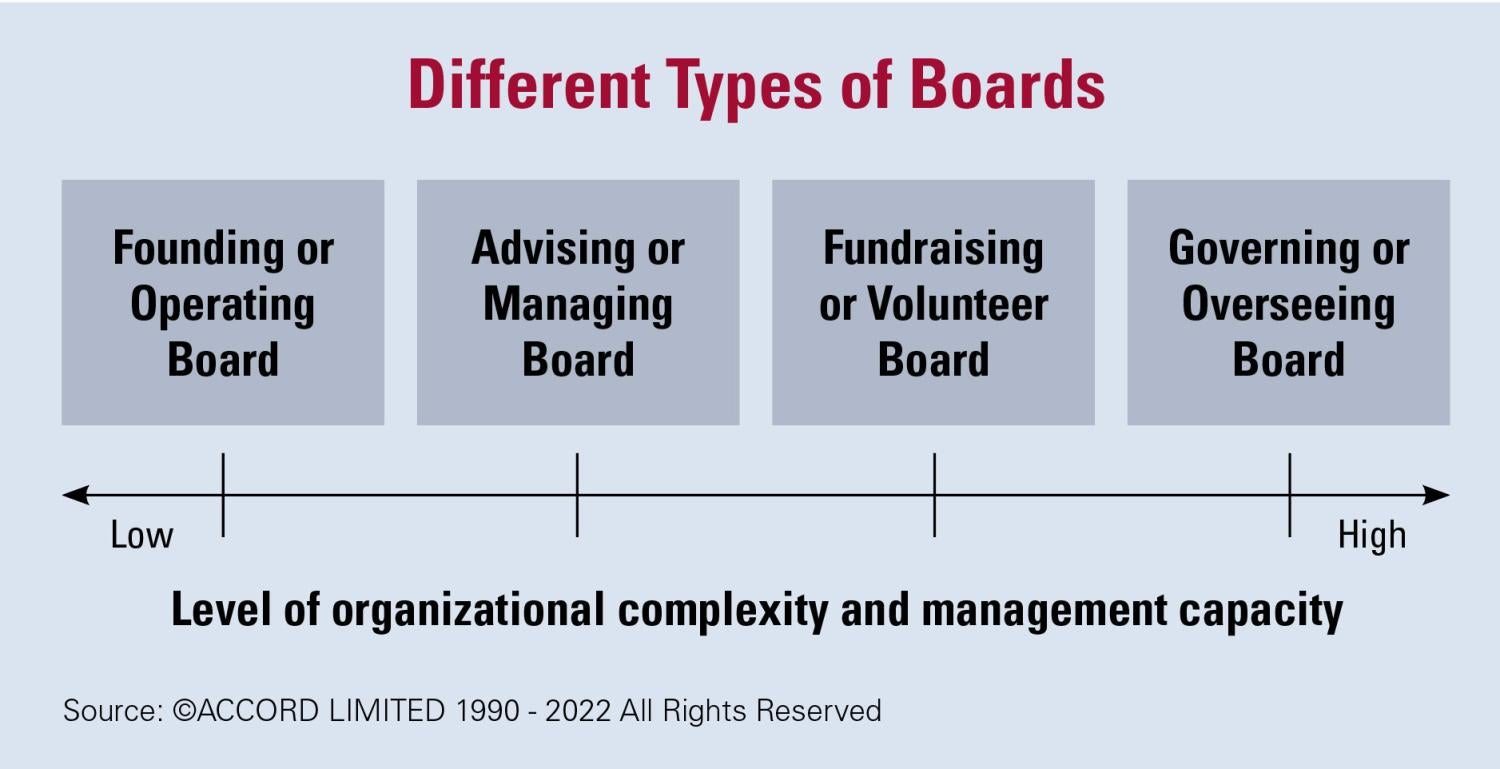
Governance
Understanding the Board of Trustees’ Role
Expectations for different types of boards
By Pamela R. Knecht
Almost every board retreat and trustees education session addresses the question, “What is the role of the board?” Given that legal corporations have existed in the United States since the 1790s and every corporation must have a board, one would think everyone knows the answer to this question by now. Yet many individuals who serve on boards of not-for-profit organizations are uncertain about their role.
Most governance experts would say that some trustees do not fully understand their role because of insufficient education on the function of corporate governance. Very few schools — other than law schools and some business schools — include courses on how to be a trustee of a legal corporation. To complicate the issue, most individuals become trustees many years after finishing their formal schooling.
Fundamental Board Orientation and Education
Today many organizations, including the American Hospital Association, offer resources and publications on corporate governance. This information can help individuals begin to understand their fiduciary duties of oversight, care, loyalty and obedience.

Likewise, a new trustee can and should be taught how their fiduciary duty of oversight is different than the functions of management and operations. This is important for individuals who become hospital trustees as some begin their term without having served on any other board. Therefore, the best orientation sessions about fiduciary duties use practical examples and case studies to help trustees understand the important distinctions.
Boards that follow best practices offer annual refreshers for current trustees on fiduciary duties and the difference between governance and management. Some boards invite all members to attend new trustee orientation sessions explicitly for this purpose. In other cases, the role refresher occurs during a board meeting when trustees are asked to complete annual conflict of interest disclosure forms. This approach appropriately emphasizes the important tie between fiduciary duties and the role of each board member.
Although all of these methods help lay a foundation for governance work, they may not provide sufficient clarity. For example, many well-meaning trustees ask detailed questions about line items in the budget or opine on the best location for a billboard about the hospital’s newest physician or service. This level of detailed “advice” is typically seen by the CEO and other trustees as micromanaging. More importantly, this type of conversation uses valuable board time that would be better spent discussing the strategic direction of the organization and other topics about which management needs board input.
Different Types of Organizations and Boards
There is another, perhaps less obvious, reason that it is difficult for many boards and their CEOs to agree on the appropriate role of the board. Those who have served on other boards may come to the hospital or health system board with differing governance experiences. Those experiences include but are not limited to serving on the boards of a:
- new not-for-profit organization;
- privately held, for-profit company;
- more mature not-for-profit organization;
- for-profit, publicly traded corporation; and/or
- large and complex not-for-profit organization such as a hospital or health system.
In general, the role of the board in governing each of these organizations is different. Here is an overview of those distinctions.
Founding or operating board. If a person is asked to serve on the board of a new not-for-profit organization, they are most likely going to have to help do the work. They may help draft bylaws, create a website, develop a budget and stuff envelops for the inaugural fundraiser. In other words, they are the “doers,” serving as the staff as well as being on the board that will help oversee and fund the new entity.
Advising or managing board. Owners of a privately held business may ask trusted colleagues to join their board. In most cases, this type of board is advisory to the owners; it is not a fiduciary board. The owners typically select board members who have expertise in areas that the owners lack. For instance, a technology start-up may need experts in human resources or financial management or strategic planning. Board members provide needed advice to the owners in their areas of expertise. The owners may even ask board members to interact directly with the staff or managers to assist them with their work.
If the business ownership includes a private equity firm, the board likely includes individuals who are brought in to help run or even turn around the business. They may function as both executives and board members. Their role is much more granular than for other types of boards because they are protecting the shareholders’ interests using their expertise. For example, these board members may become heavily involved in assessing the competence of the management team.
Fundraising or volunteer board. As a not-for-profit organization becomes more mature and hires skilled executives such as an executive director, chief executive officer, chief financial officer and chief operating officer, the role of the board may become more elevated. Instead of functioning as staff, the board’s primary value to the executive team may be to help with friendraising and fundraising. Board members also may volunteer their time to help provide services. The CEO may encourage the board members, volunteers and staff to interact with each other to help explain the mission of the organization to potential donors and funders. They also may be asked to assist in advocating for the organization with other external parties, including public policymakers.
If one board is responsible for both fundraising and oversight, the role of that board includes fulfilling the fiduciary duties of a not-for-profit organization’s board. Regulators, legislators, funders and others will expect the board to ensure that its activities are furthering the mission and that the public’s assets are used appropriately. They are to oversee management, not do the work of staff or managers.
Governing or oversight board. The role of the boards of the largest and most complex organizations, whether they are for-profit or not-for-profit, is elevated once again, to one of oversight. These organizations have the resources to hire executive and management teams with breadth and depth of knowledge in the organization’s field as well as in their own function, such as talent management, mergers and acquisitions, and quality improvement.
These boards are not intended to be doers or managers; they are charged with corporate governance or oversight. These board members must ensure that policies and processes are in place to fulfill their fiduciary duties and core governance responsibilities on behalf of the shareholders — in for-profit companies — or the public trust — in not-for-profit organizations. Corporate governance entails providing independent oversight of the mission, strategic direction and goals; CEO selection, evaluation, compensation and termination; finance and investment; audit, compliance and risk management; quality, safety and service; independence and conflicts of interest management — as well as ensuring their own governance structures and practices are effective and efficient.
Not-for-profit health care boards also are responsible for understanding the health needs of the communities they serve and ensuring the CEO and staff have developed initiatives to address those needs. They also should be advocates for the hospital or health system in the community and, as requested, assist with public policy efforts.
Many health care governing boards also are responsible for assisting with friendraising and fundraising. However, most hospitals and health systems have separate foundation boards whose role is like the fundraising or volunteering board described previously.
In such large, complex organizations, the board’s only employee is the CEO, and trustees rely on the CEO to hire, manage, evaluate, compensate and, if necessary, terminate all other employees. The board monitors the performance of the organization and the CEO and holds the CEO accountable vis-à-vis the board-approved strategy, goals and policies.
The Role of the Board
In summary, the answer to the question, “What is the role of the board?” is — it depends.
The appropriate role of a board depends on the type of organization or corporation it oversees. Smaller organizations in both the for-profit and not-for-profit worlds may expect their board members to help with some staff or management work. However, most hospitals and health systems in the United States are complex, well-developed, not-for-profit organizations that expect their trustees to play a different, more elevated role.
Pamela R. Knecht (pknecht@accordlimited.com) is president and CEO of ACCORD LIMITED.
Please note that the views of authors do not always reflect the views of AHA.
